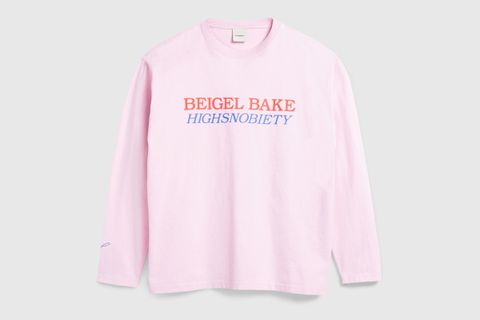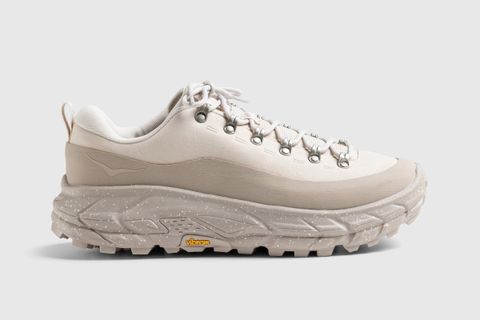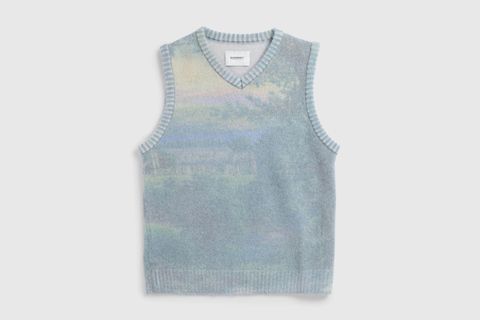Union LA's Chris Gibbs Is Proud to Be a Streetwear Brand
Chris Gibbs is one of the most storied extant figures in the world we call streetwear. The nearly-50-year-old Union LA boss has been around since the scene's inception and yet he is as wide-eyed-excited about great clothes as he was back in the halcyon days.
Talking to Highsnobiety at the Union LA Spring 2024 showroom in New York, Gibbs is just happy to be here, even though he rushed over immediately after getting off a five-hour flight from Los Angeles.
We're ostensibly here to discuss Union LA's new in-house collection for Spring/Summer 2024 but also anything that comes to mind, because Gibbs is incredibly warm, game to talk anything at all (I had to stop myself from talking his ear off about Japanese fashion — the brands, the consumers, the culture).
But we are here to talk about his new clothes and talk he does, passionately breaking down Union's design language at length.
"I come from a background of what I call 'streetwear, no chaser,'" says Gibbs. "That's the '90s stuff, basic hoodies, T-shirts. But [our collection] is more inspired by the Japanese POV on fashion, like how they'll do classic Americana but upgrade with with a twist. Fabrics, shapes, drape."
Hardly anyone in the West has more authority in the realm of Japanese fashion than Gibbs.
He could justifiably be credited for being the first to stock the granddaddies of Japanese streetwear, like WTAPS, NEIGHBORHOOD, visvim — Gibbs is such a visvim disciple that he was the only person quoted for comment ahead of visvim's first-ever runway show back in 2016.
With all this streetwear cred, you might think that Gibbs is tired of the word — "streetwear," that is. Not really. Quite the opposite, in fact.
"Some of my best friends would not like to be called a streetwear brand," he says with a chuckle. "But I'm proud of what we are. We are a streetwear brand."
Spring/Summer 2024, available on Union's website, is a great time to tune into what Union LA's broadcasting.
The retailer's debut clothing collection, produced back in 2017, was more of an acquired taste: an elevated line of indigo-dyed workwear based on Gibbs' personal uniform. The Japanese-made line was so sophisticated that its accompanying lookbook was painted by artist Delfin Finley.
But with great indulgence comes great cost and the line was put on hold. In 2021, Union relaunched its in-house collection as a more cost-effective proposition, though the quality remains intact. The end product is, in Gibbs' words, a "value proposition."
"We try to offer the streetwear consumer a considered take on the look." He points to a couple washed-out T-shirts. "For all of our printables, it's a custom body, custom print... We don't do Plastisol prints on Hanes blanks. So, it's gonna cost a little bit more but we're not trying to sell it like a luxury product."
The other garments are also more stylistically adventurous. SS24 delivers thick short-sleeved sweaters with armholes wide enough to fit over your head, boxy water-repellent shirts, and knitted basketball shirts, an evolution of the sober chore coats of Union past.
I mean, this still is certainly a more advanced but they're all branches of the same tree, growing from the seeds of Gibbs' imagination. That was what he wore then and this is what he wears now.
Another extra-personal touch: instead of commissioning an artist to render illustrations of the line, Gibbs enlisted his eldest son, currently studying fashion at illustrious fashion institution Central Saint Martins, to style Union's SS24 collection in the vein of his preferred avant-fashion inclinations.
And, beneath it all, Union's forthcoming Clarks Wallabee collaboration, which was also at the showroom. More Nike sneakers will also come later this season but the Wallabees felt especially fitting for the lookbook — here you have Gibbs' son studying in London, styling the collection with a collaborative British shoe. Happy coincidences. Life's full of 'em.
Life's also full of clothes. Gibbs knows this. And that's why he wants Union to only produce clothes worth producing. Or not worth not producing.
"My head designer has this thing he calls 'reason not to buy," he said. "Like, if we've gone too far on a design, he'll be like, 'That's a reason not to buy.' So, on the flip side, we try to give the consumer a reason to buy. The goal for us is, you see this collection hanging on a rack next to a bunch of other brands that are contemporaries and, hopefully, we're giving you a reason to buy."


